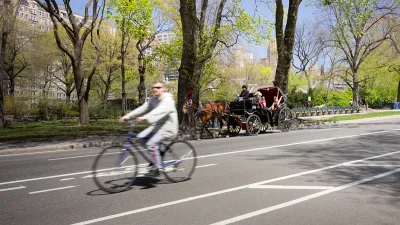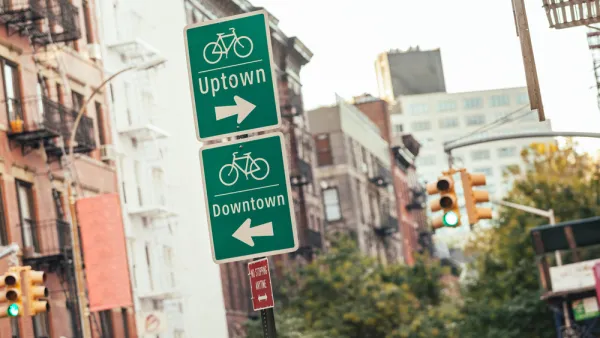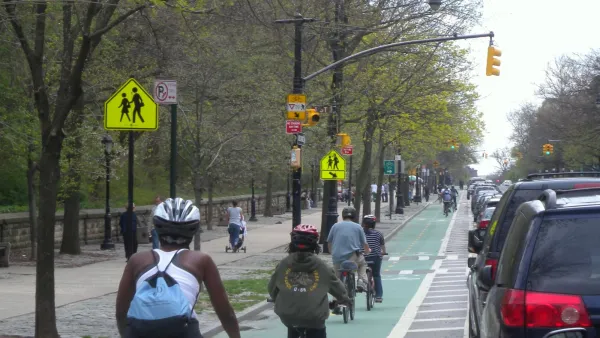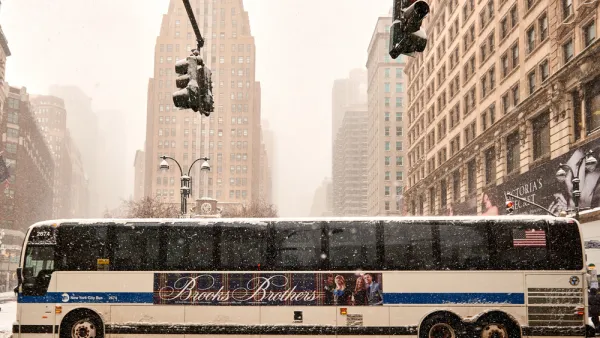A new report released by the New York City Department of Transportation (DOT) shows a steady increase in the number of bikers in the city. A lack of data, however, continues to be a problem for accurate assessment of the trend.

"Biking in New York City has been rising at a steady clip, according to a new report from NYC DOT, increasing about 50 percent between 2010 and 2014," reports Ben Fried.
Tempering Fried's excitement about the growing number of bikers in the city are the glaring omissions in the report: "What’s not so clear is how things changed in 2015, because the report lacks key information about bike traffic on the Hudson River Greenway."
The "Cycling in the City" report [pdf] combines data from the U.S. Census, a city Department of Health survey, and the DOT bike counts. "In some ways the report is a step up from the annual cycling metrics DOT has released in the past, which only included the DOT bike counts," writes Fried. "Folding in the Census bike commute numbers and health department survey data yields a more complete view of citywide and borough-by-borough cycling trends."
The problem begins in 2015, explains Fried. Because the report lacks "counts of cyclists on the Hudson River Greenway and 50th Street, or at the Whitehall ferry terminal" in 2015, it's impossible to compare that year to the years previous. Friend offers this recommendation: "Instead of waiting for DOT to release a report with all of these stats each year, the city should be publishing them as feeds on its open data portal, giving New Yorkers access to all the underlying numbers."
The article also includes a series of information-packed graphics to illustrate the trends in biking around the city.
FULL STORY: All of DOT’s Bike Metrics Should Be Published on NYC’s Open Data Portal

National Parks Layoffs Will Cause Communities to Lose Billions
Thousands of essential park workers were laid off this week, just before the busy spring break season.

Retro-silient?: America’s First “Eco-burb,” The Woodlands Turns 50
A master-planned community north of Houston offers lessons on green infrastructure and resilient design, but falls short of its founder’s lofty affordability and walkability goals.

Delivering for America Plan Will Downgrade Mail Service in at Least 49.5 Percent of Zip Codes
Republican and Democrat lawmakers criticize the plan for its disproportionate negative impact on rural communities.

Test News Post 1
This is a summary

Test News Headline 46
Test for the image on the front page.

Balancing Bombs and Butterflies: How the National Guard Protects a Rare Species
The National Guard at Fort Indiantown Gap uses GIS technology and land management strategies to balance military training with conservation efforts, ensuring the survival of the rare eastern regal fritillary butterfly.
Urban Design for Planners 1: Software Tools
This six-course series explores essential urban design concepts using open source software and equips planners with the tools they need to participate fully in the urban design process.
Planning for Universal Design
Learn the tools for implementing Universal Design in planning regulations.
EMC Planning Group, Inc.
Planetizen
Planetizen
Mpact (formerly Rail~Volution)
Great Falls Development Authority, Inc.
HUDs Office of Policy Development and Research
NYU Wagner Graduate School of Public Service





























